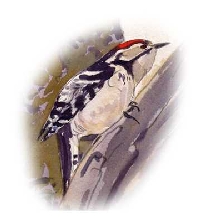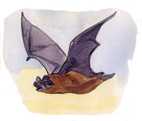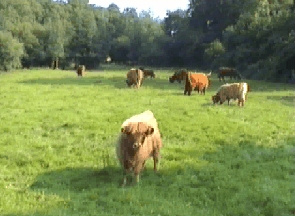
Lesser Spotted Woodpecker (Dendrocopos minor)
|
Following the footpath around the
top of The Moors takes you through a small wooded area. This is a good place
to see woodland birds such as woodpeckers. All three British species breed
on The Moors – Green Woodpecker (Picus viridis), Great Spotted Woodpecker
(Dendrocopos major) and Lesser Spotted Woodpecker (Dendrocopos
minor), the latter is shown opposite. There is always a good chance
of seeing and hearing a Nuthatch (Sitta europaea) squeaking from
the large mature oak trees (Quercus robur) that grow along the old
boundary bank of the reserve. |
|
In the early spring Lesser Celandines
(Ranunculus ficaria) form a yellow carpet along the paths. Later,
patches of Wild Garlic (Allium ursinum) growing on the wood bank
make their presence known by their pungent smell as you pass by. Speckled
Wood (Pararge aegeria) butterflies are often seen during the summer
months dancing in sunny spots along the path.
|
|
|
| The footpath then takes you out into another
meadow with views over the heart of the Moors reserve, keep your eyes open
for Roe Deer (Capreolus capreolus) that often feed out in the open
fen. |
 |
On a summer’s evening walk you may see large
Noctule Bats (Nyctalus noctula) flying high over the fen chasing
insects before dusk. Bats are no longer common across Europe; all bats are
now protected by European law. To find out more about bats in the UK visit
the Bat Conservation Trust web site: www.bats.org.uk |



